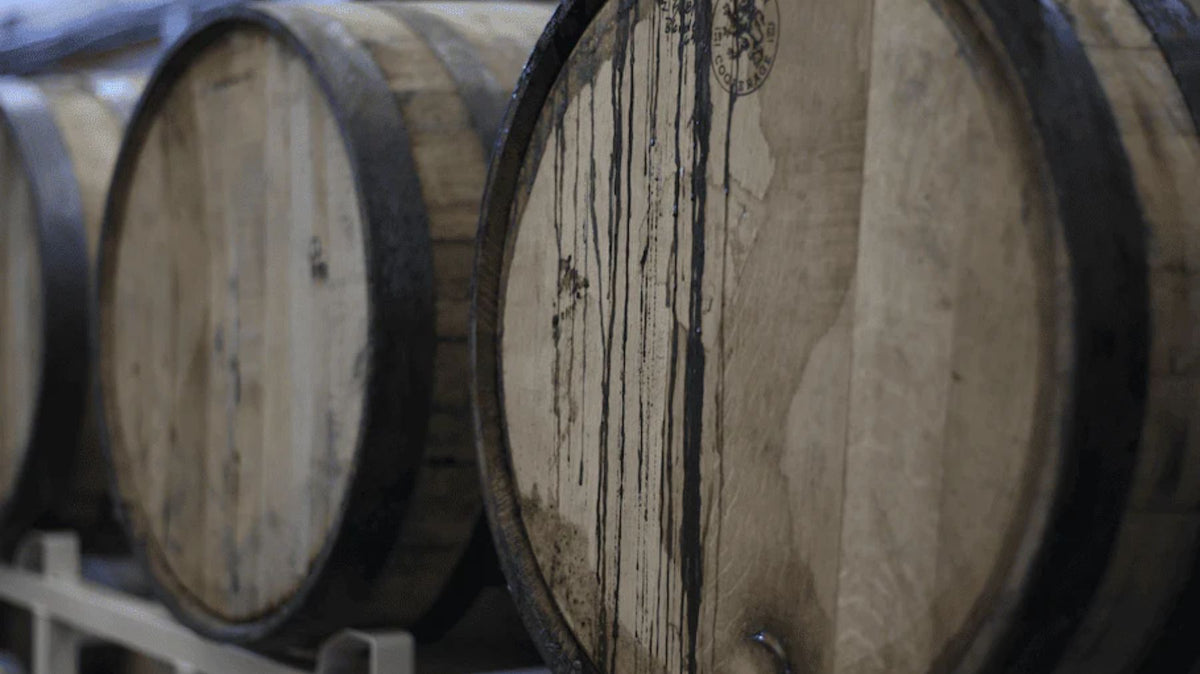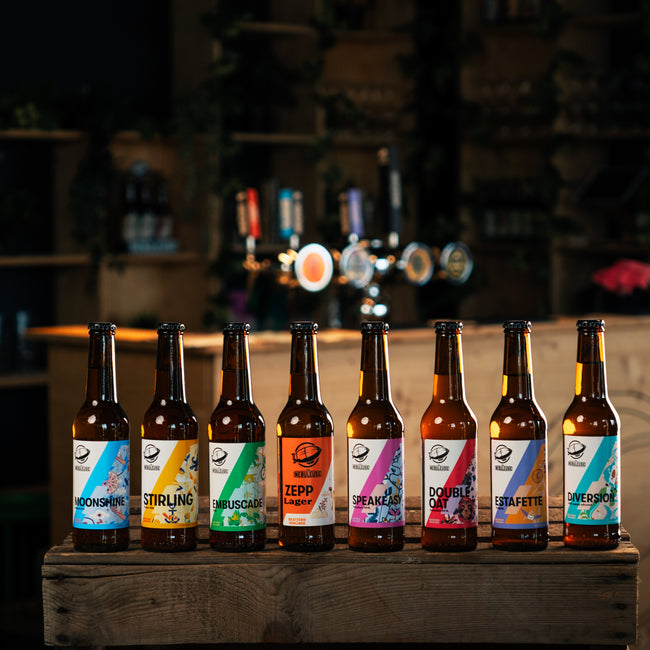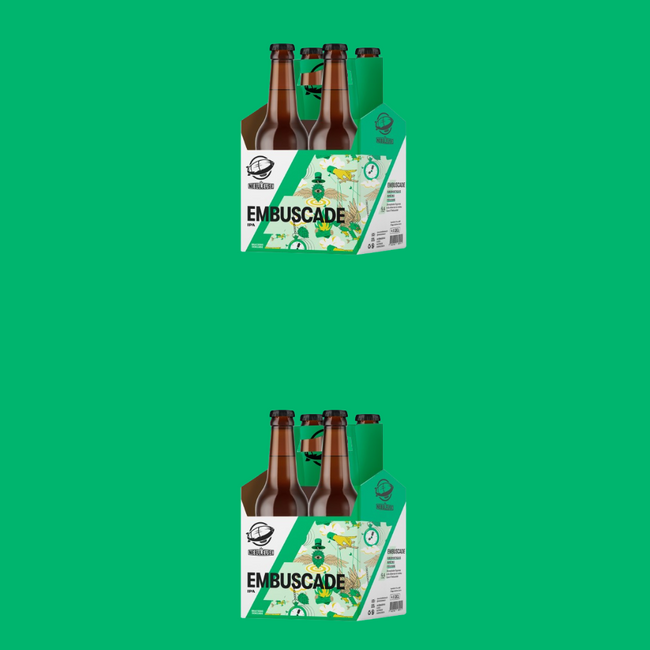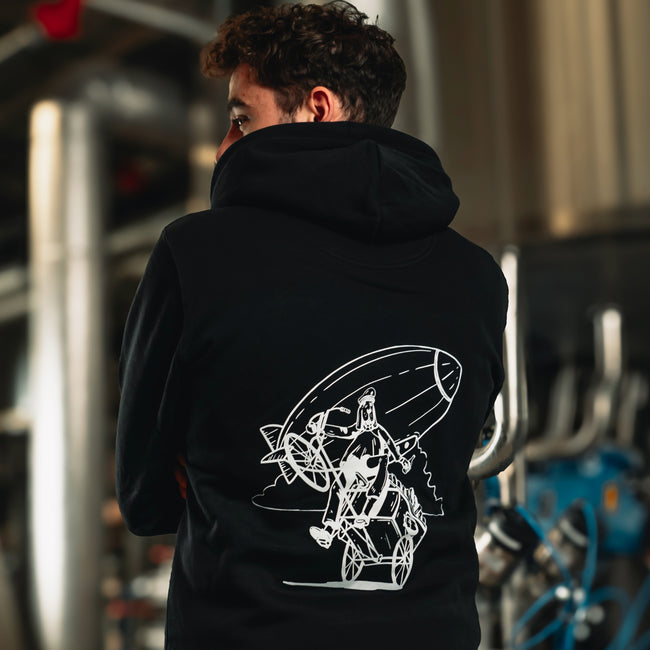The magic of wood aging in craft beers

Forget everything you know about beer for a moment. Imagine instead a temporal alchemy where the golden liquid transforms in the belly of an oak barrel. This ancestral technique, which industrialization had almost relegated to oblivion, is now experiencing a resounding comeback in the creative laboratories of the most daring microbreweries. When wood joins the party, beer is no longer just good, it becomes memorable.
The ancestral heritage of aging in wood
Before stainless steel became the modern brewer's best friend, wood reigned supreme. The Sumerians already stored their nectar in wooden containers. A few millennia later, medieval monks took the experiment further, letting their brews slumber in immense barrels for months.
Then came the industrial revolution, and with it, excessive standardization. Out went the mysterious interactions of wood, in came clinical efficacy. Only a few diehards, like Belgian lambic producers, kept the flame alive, jealously guarding their century-old barrels.
When the first rebels of the craft movement began to challenge brewing dogma, barrel aging emerged as the perfect weapon for this taste revolution. Americans led the way in the 1990s with bourbon barrels. In Switzerland, the approach was more subtle, favoring elegance over raw power.
Today, special fermentation techniques increasingly incorporate wood aging, giving rise to a new breed of beers that transcend established categories.
Barrel aging is a true molecular dance where the wood plays the intermediary between air, time, and beer. This magic works through three phenomena: micro-oxygenation (the breath that transforms flavors into notes of caramel and candied fruit), the transfer of wood compounds (vanillin, lactones, tannins), and the infusion of secondary aromas if the barrel has already housed another alcohol.
Even The natural carbonation changes character in the barrel, becoming finer, more persistent, to better carry the newly acquired aromas.
The symphony of woods and flavors
In this quest for aromatic complexity, not all woods are created equal. Oak reigns supreme, but it is a monarch with many faces. The American beer bombards your beer with notes of vanilla and caramel sweetness. Its more reserved French cousin brings tannic elegance and spicy nuances. The Hungarian blends the two with a distinctive fruity profile.
Why settle for a new barrel when you can embrace one already steeped in history? Bourbon barrels are the rock stars of this category, injecting notes of vanilla and caramel into your beer. A sherry barrel will bring notes of dried fruit, while a rum barrel will play the tropical sweetness card.
La Nébuleuse's Double Oat would be the perfect candidate for this type of adventure. With its 8% alcohol content and rich tropical base, it has the structure to absorb the barrel's aromas without losing its identity. Imagine its mango and pineapple notes becoming more complex upon contact with the bourbon, developing dimensions that would complement its natural sweetness.
The art and technique of controlled aging
Not all beers are created equal when it comes to oak. Robust styles are gaining ground: imperial stouts, barleywines, and Belgian quadruples are natural candidates. But preconceived notions deserve to be challenged. La Nébuleuse's Estafette , a Belgian triple with aromas of banana and apricot, could develop incredible nuances in a Chardonnay barrel, its 7% alcohol giving it just enough structure for this aromatic dialogue.
Good barrel aging cannot be improvised. The ideal temperature is between 10 and 15°C. Any warmer and you risk aromatic drift. Any cooler and the wood becomes timid. How long does it last? Between 3 and 12 months for most craft beers. It's not an exact science but an art, where This precise thermoregulation and attention to detail make all the difference.
How do you recognize a successful barrel-aged beer? Aromas of vanilla, caramel, and spices generally come from the wood itself. Notes of dried fruit or sherry result from controlled oxidation. The texture also deserves your attention: a good barrel-aged beer often has a distinctive roundness. And above all, look for harmony. In a successful aging process, the wood doesn't mask the original beer, but rather enriches it.
Time as the secret ingredient
In our world of instantaneity, barrel aging reminds us that some things cannot be rushed. Time itself becomes an irreplaceable ingredient , silently working to transform what the brewer has created.
The next time you enjoy a barrel-aged beer, take a moment to appreciate not only the flavors in your glass, but also the time, expertise, and passion invested in creating this unique experience. Because at its core, it's much more than a brewing technique: it's a philosophy of transformation, where each sip tells a story of the encounters between liquid, wood, and time.









